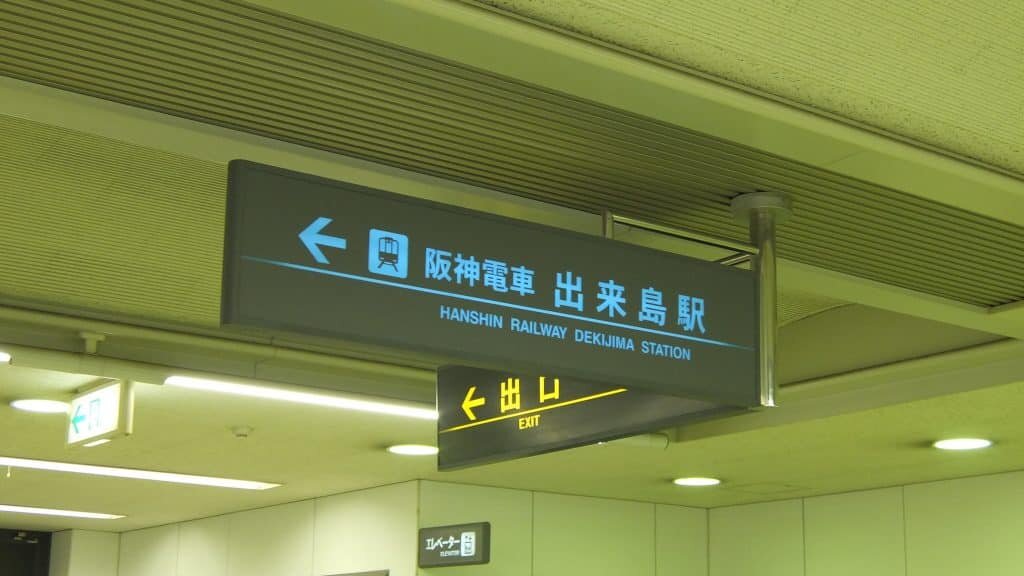
Many of the world’s great cities are defined to some extent by the waterways that run through them. As the River Liffey is said to give Dublin’s legendary Guinness its special flavor, as the Clyde has become a symbol of the pugnacious invention of the Glaswegian, as the Tiber formed the seeds from which an entire Roman Empire would bloom, so too does the Yodogawa River embody much of what it means to be from Osaka. Yodogawa Ward
Nishi Yodogawa is one of three wards in the city to carry the Yodogawa river’s own name, along with Yodogawa Ward and Higashi Yodogawa Ward.
These designations are geographical. Nishi means west in Japanese, with Nishi Yodogawa being the farthest west of the three districts. Conversely, with higashi meaning east, Higashi Yodogawa is the eastern-most of the three.
Nishi Yodogawa is made up of three interconnected islands, with the west side bordering Amagasaki City, in Hyogo Prefecture.
Historically, much of the area used to be under water, and even today Nishi Yodogawa Ward is still prone to flooding from time to time.

This is perhaps why the Japanese word “shima” or “jima”, meaning island features so prominently in many of the place names and locations of interest in this district.
Dekijima, Himejima and Mitejima are the three main train stations for the ward, as an example.
Unlike some of the more built up parts of Osaka, one of Nishi Yodogawa’s big attributes is its footpaths, and walkways. It’s a great place to walk around and get some fresh air, or at least fresher air than you’ll find in the city center!
Onogawa Ryokuin Doro is one of the greenest walkways not just in all of Osaka, but indeed all of Kansai. This 6km long pedestrian path, running from the central Nishi Yodogawa Industrial Area to the outlying Kanzaki River which borders Hyogo Prefecture, has a total of around 130,000 trees, comprising more than 100 different varieties lining both sides of the path.
It is, without doubt, one of the most relaxing and cleanest places for a walk in all of Osaka.
Of course being a seaside district, no visit to Nishi Yodogawa Ward is complete without a trip to the coast line. Undoubtedly the best place in the district to exercise your “sea legs”, is Yagura Ryokuchi.
This man made beach, constructed out of reclaimed land at the point where the Kanzaki and Yodogawa rivers meet, was constructed in 1997 and formally opened to the public in 2000.
Unlike most other seaside parklands in the city of Osaka, Yagura Ryokuchi directly connects with the seabed. There are not man-made barriers, flood gates or walls.
Instead, the naturally formed rock barrier has created its own tidal pool, drawing on the conflicting water flows of both the Yodogawa and the Kanzaki rivers.
Here, sea life is abundant and easy to spot for the intrepid animal loving visitor.
Crabs, small fish and even sea lice will make this pool their temporary home during the various points of tidal shift throughout the day.
Yagura Ryokuchi is also a popular dating spot in the evening. Couples enjoy taking a walk along the seaside, with the bridges of the Hanshin Expressway in the background, illuminating the night sky and creating an image that has, in recent times, come to be the image most commonly associated with this part of the city.

Nishi Yodogawa isn’t without its historical significance either.
Way back in 1580, during his quest to unite all of Japan under his iron rule, Nobunaga Oda sought to protect the area where Kanzaki and Yodogawa met, considering it strategically important as a trade route into nearby Kyoto, which was the capital city of Japan at the time.
So, he instructed his generals to construct Owada Castle.
The castle has sadly long since been lost to history. Conflicting accounts say it was either destroyed in a siege decades later, taken down by flooding and storms (which seems more likely given the location) or just simply left to rot once the Shogun lost interest in the area and switched the capital city to Edo (modern day Tokyo).
Today, where the castle once was, there stands a stone monument to its existence, in front of what is now Owada Elementary school.
It’s kind of ironic that what was once a center of war and conflict, today serves as a place of education to the descendants of those brave samurai warriors.
The quickest way to reach Nishi Yodogawa ward from central Osaka is to take the JR Tokaido Sanyo Main Line from Osaka Station. After 4 minutes, you will arrive in Tsukamoto, in the northern quadrant of Nishi Yodogawa Ward. Take the south exit from the station (the north exit leads into Yodogawa Ward.
Be sure to take the local Sanyo line train, and not the express, which does not stop at Tsukamoto and carries right on until Amagasaki.





















